The best native advertising, when done well, should blend so seamlessly within its environment that viewers won’t even notice it’s advertising. The success of your campaigns largely depends on the creativity of your images and how well they allow you to engage audiences without being disruptive.
Consumers are more engaged when imagery is present, especially when it’s good.
A survey from eMarketer, including shoppers in the United States, Canada, Australia, France, Germany, and the United Kingdom, found that 62% said they’re more likely to purchase based on photos and video.
The Microsoft Audience Network is our programmatic native solution that uses Microsoft’s unique first-party audience data to help you better connect with your customers. It allows you to target and reach your ideal audience on premium native placements across sites like MSN, Microsoft Edge, and Outlook.com, as well as CBS Sports, Fox News, and more.
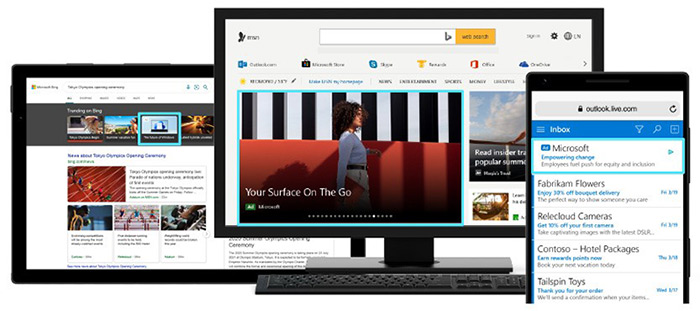
Why the native environment matters
Native advertising excels because of its ability to blend with a chosen environment. In a world where consumers see thousands of ads each day, creating advertising that doesn’t feel overt and promotional goes a long way toward increasing engagement.
The best in-feed native ads seamlessly integrate with the page, mimicking the surrounding of the site design wherever they’re delivered.
Creative tips for native advertising
Advertisers must get creative as people become more sophisticated in the ways they discover and interact with content. Most consumers can spot an ad from a mile away, and they’re more likely to respond to and interact with it if it follows these best practices:
1. Use lifestyle images
Lifestyle images are those including people engaging in real-life activities. It could be one person or several, likely engaging with or using your product. Ideally, these images show the sentiment you want people to relate to your brand story or product. You’re telling a story through pictures, whether that’s a party, a boardroom, a solo hike in fitness wear, or a mechanic working on a space shuttle. These images help people envision using the product or service in a relatable situation.
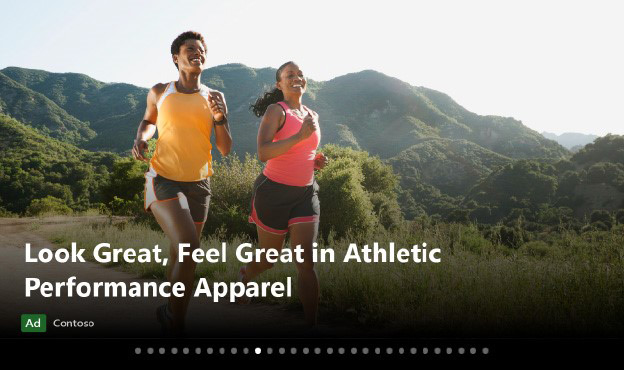
Logo, text, or any other elements shouldn’t be included in the image for a few reasons. Some native ads have a text overlay, and if your image includes a logo or other elements, it could be obscured and create a poor user experience. Further, using a logo and other elements diverts from the purpose of native advertising, which is to blend within the environment—not stand out as an ad.
2. Avoid image clutter
Clean images with a single centre of focus will help your ad stand out. Having a “cluttered” image means there are too many objects that aren’t the focus. It might be difficult for viewers to immediately know where to look or settle their eyes. Clutter draws the vision in too many directions. People only spend seconds on images; you don’t want those seconds wasted deciding what they should focus on.
Clutter can be extra people, items, or elements unrelated to the image. If you can’t remove the clutter from your images, there are some tricks you can implement.
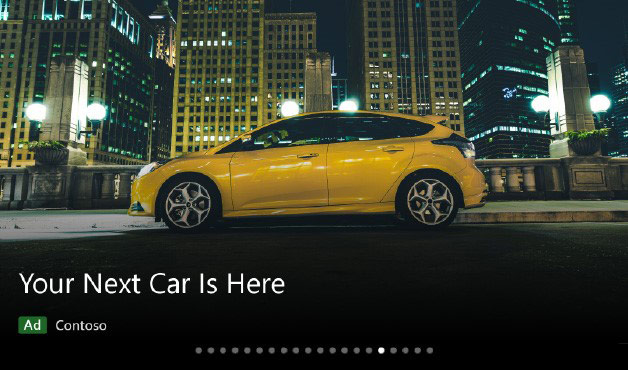
Most images have more background than is needed, and often, zooming in and cropping will remove background clutter. If that’s not an option, an alternative is more creative. Try drawing focus to your main image by creatively blurring or darkening the edges to fade the clutter into the background.
3. Target your title
If you can’t show it in imagery, you need to say it in your title.
Famous advertiser David Ogilvy was known for powerful copywriting, and he knew a good title could get people to read further. He said, “When you have written your headline, you have spent eighty cents out of your dollar.”
If your title doesn’t entice them, it doesn’t matter how good anything else is because they’ll never see it.
Engage your audience by speaking to them directly by using “you,” “your,” or “Meet the new Xbox wireless headset,” for example. It personalises the copy and makes the reader feel like you’re talking to them. It may be just the pause needed to keep them reading.
4. Front-load titles
Do you notice this post starts with “Top 5”? That’s because we front-loaded the title with an eye-catching numbered list to entice engagement. If you’re reading this, it worked.

Front-loading your native advertising title optimises it so the main point of your content is at the beginning. Viewers will only spend a fraction of a second on seeing what it’s about, so don’t waste it on filler words. Entice them with a list or use power words upfront.
5. Run multiple assets
Consumers quickly learn to overlook something they’ve seen before. When the images follow best practices and promote your brand message in a positive light, they can drive more viewer action and encourage interaction. Ultimately, this will help to achieve your goals.
Keep people engaged by creating a plan to refresh images to maximise performance. Go live with at least three to five ads testing different iterations of images and headlines. Our Microsoft Audience Network global frequency cap is set at 6x per week per person and resets upon click. Perform a creative audit to see what’s working best and refresh every 30 days to avoid ad fatigue.
How Microsoft Advertising can help
We take consumer behaviours into consideration and invest in ad products and tools to help you engage. The following products will give your images more power and help you find and enhance the ones you’re using to make the most impact.
Multi-asset Audience Ads—now in beta
Our newest image offering makes creative testing easier to help ensure you’re using the best images. Multi-asset Audience Ads allow you to add multiple variations of headlines, descriptions, and images—and Microsoft Advertising will automatically serve the best performing combinations.
Multi-asset Audience Ads, now available by request on the Microsoft Audience Network, allow you to create up to 16 images, 15 short headlines, 5 long headlines, and 5 descriptions. Our AI automatically serves the best performing combinations to reach the right audience at the right time. These ads adapt your message to closely match the intent of your customers and require less ad creative management effort than some other methods.
To opt into this pilot, contact support or your account representative.

Creator Tools
With Creator tools, all of your image management is easier. You can find relevant creative images, leverage smart tools that help choose the best pictures from your website, and edit your photos right from the tool, so your creatives stand out from the rest. Creator tools takes the guesswork out of creative strategies and helps you grab attention.

Shutterstock images
Shutterstock has more than 360 million images for you to choose from. Plus, we’ve launched people filters, a new feature to help you find highly relevant, inclusive lifestyle imagery. You can filter the Shutterstock library of photos by the number of people, gender, ethnicity, age, and more to easily find images that promote representation and inclusion.
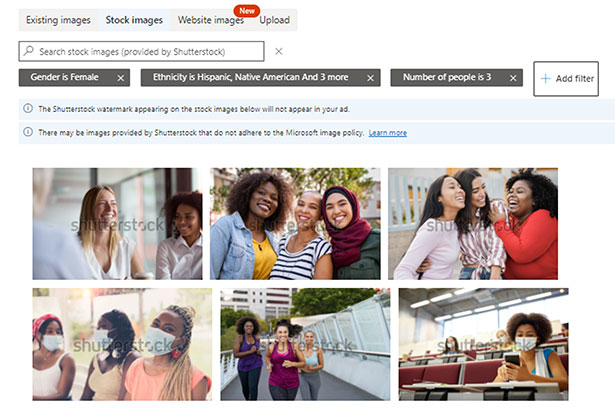
Facebook/Google Import
Our import tools make all of this easier. Try Facebook Import and Google Import to get audience campaigns up and running quickly.
If you’re still on the fence about trying native advertising, consider this: Our latest first-party data shows that users exposed to Microsoft Audience Ads are 5.5x more likely to purchase from you!
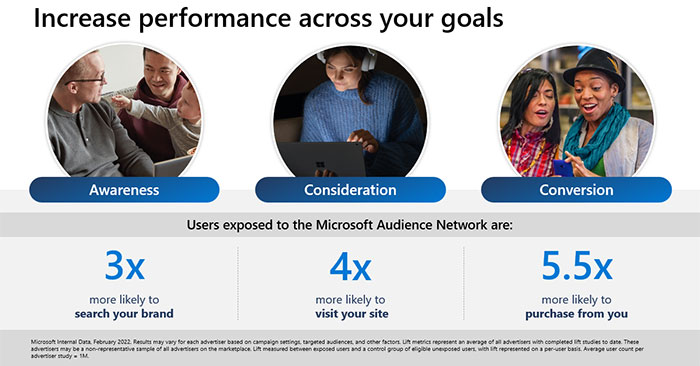
Get started!
Review our native ads creative specs for more information on creative guidelines and best practices you can implement today.
Stay informed
Sign up for the weekly Microsoft Advertising Insider newsletter to keep up with the latest insights, product news, tips and tricks, thought leadership, customer success stories, and resources.